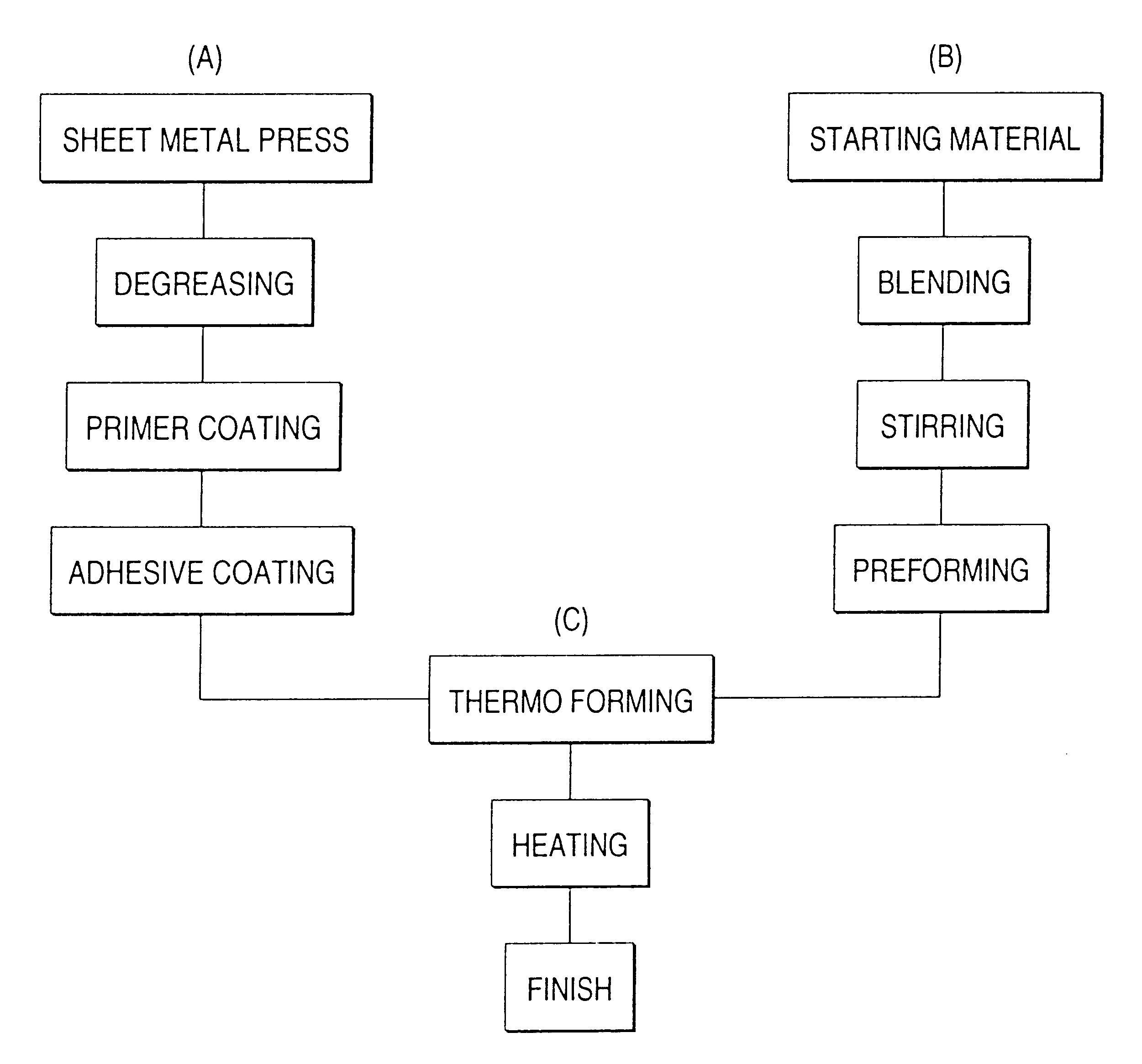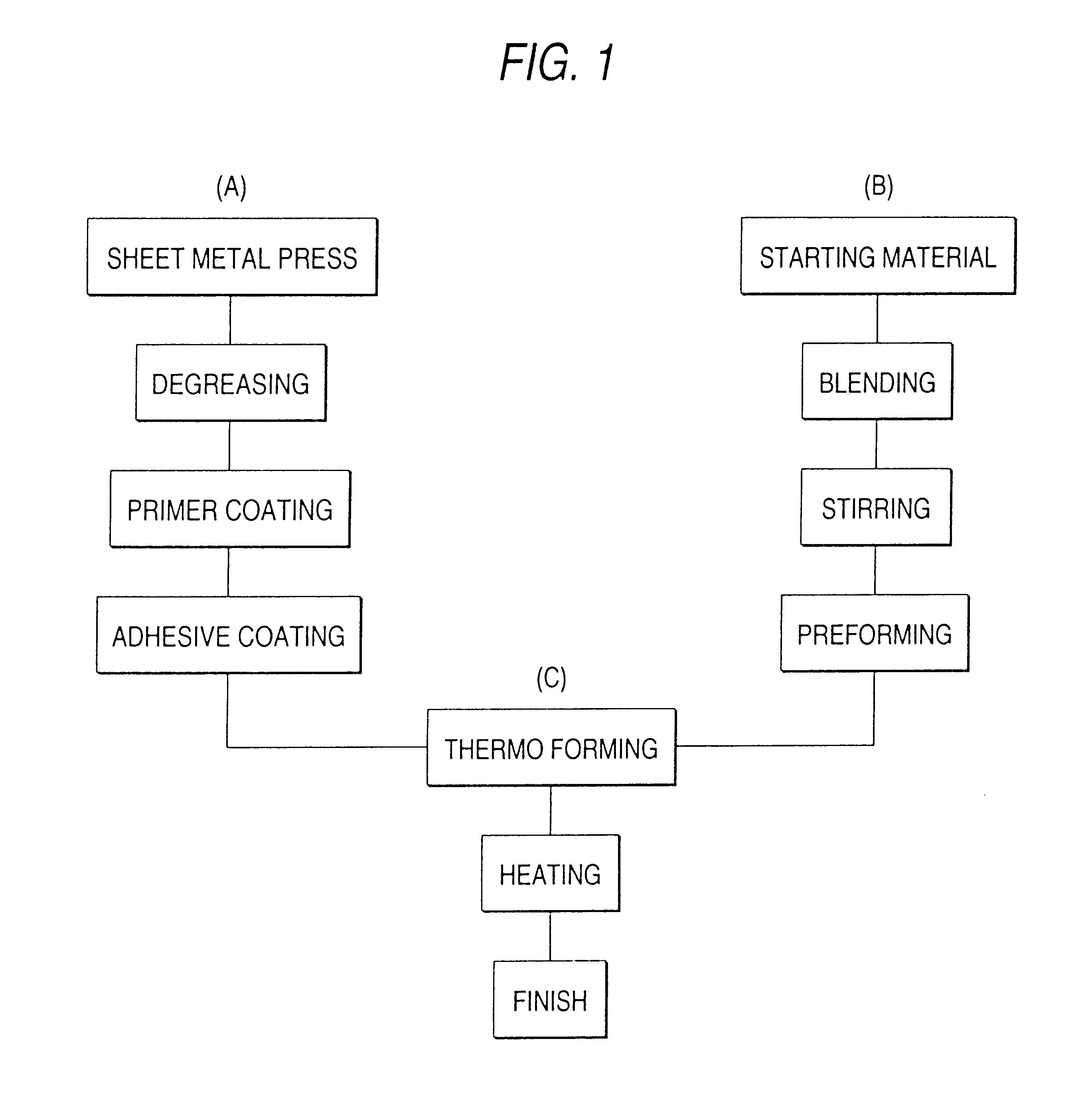Friction material
a friction material and material technology, applied in the field of friction materials for vehicles, can solve the problems of friction material getting wet with water, friction material easily absorbing water, friction material thus moistened generating a low frequency noise,
- Summary
- Abstract
- Description
- Claims
- Application Information
AI Technical Summary
Problems solved by technology
Method used
Image
Examples
example
(Example of formulation of friction material as matrix)
(Preparation of samples of examples and comparative examples)
100 parts by weight of the foregoing friction material matrix were blended with the following components, respectively. The blends were each then processed in accordance with ordinary method to prepare pads of Examples 1 to 12 and Comparative Examples 1 to 4, respectively.
These samples were prepared by combining the foregoing components.
Note) 1. Preliminary experiments revealed that if the amount of ethylene tetrafluoride powder to be incorporated exceeds 5 parts by weight, the resulting effect shows a deteriorated stability. Thus, the ethylene tetrafluoride powder was incorporated in an amount falling within the above defined range.
2. Preliminary experiments revealed that if the amount of the sodium molybdate powder to be incorporated exceeds 5 parts by weight, the resulting friction material exhibits excessive water absorption properties to cause the friction pad to ...
examples 13-16
Friction pads were prepared in the same manner as in Example 1 or Example 5 except that the friction material matrix was blended with a tetrafluoroethylene-hexafluoropropylene copolymer (FEP) or polyvinylidene fluoride (PVd) instead of ethylene tetrafluoride polymer in an amount of 0.5 parts by weight or 1.3 parts by weight, respectively. These friction pads were examined in the same manner as mentioned above. The results were similar to that of Examples 1 and 5.
In accordance with the present invention, possible creep noise can be effectively reduced not only when the friction pad is moistened after a prolonged parking at night but also when the rotor and the friction pad gets wet with water during car washing.
Further, the alkaline metal salt to be used for this purpose can be easily incorporated in the friction material matrix in the form of powder during the production of friction material. Alternatively, the friction material matrix may be impregnated with the alkaline metal salt...
PUM
| Property | Measurement | Unit |
|---|---|---|
| Percent by mass | aaaaa | aaaaa |
| Percent by mass | aaaaa | aaaaa |
| Percent by mass | aaaaa | aaaaa |
Abstract
Description
Claims
Application Information
 Login to View More
Login to View More - R&D
- Intellectual Property
- Life Sciences
- Materials
- Tech Scout
- Unparalleled Data Quality
- Higher Quality Content
- 60% Fewer Hallucinations
Browse by: Latest US Patents, China's latest patents, Technical Efficacy Thesaurus, Application Domain, Technology Topic, Popular Technical Reports.
© 2025 PatSnap. All rights reserved.Legal|Privacy policy|Modern Slavery Act Transparency Statement|Sitemap|About US| Contact US: help@patsnap.com


